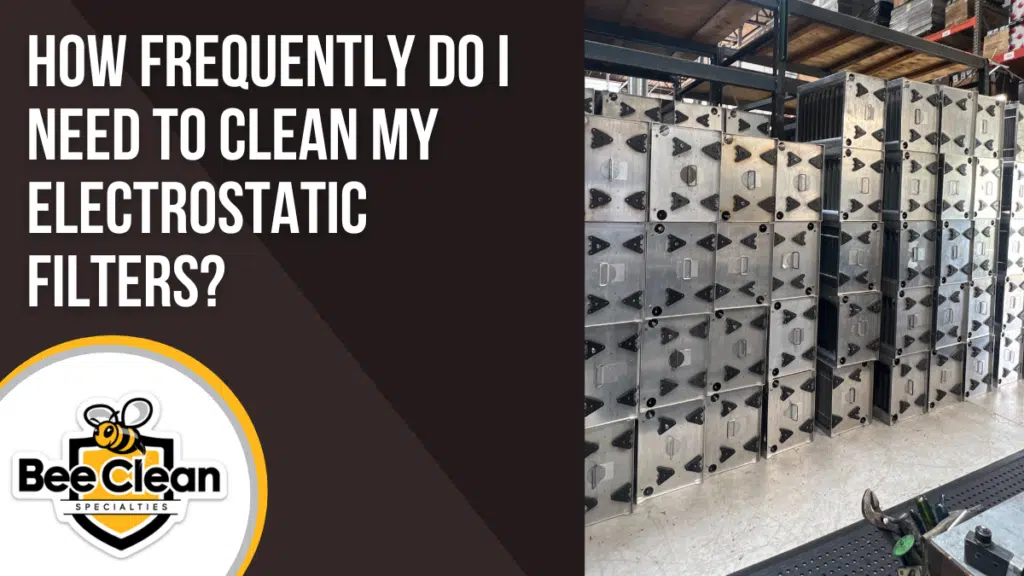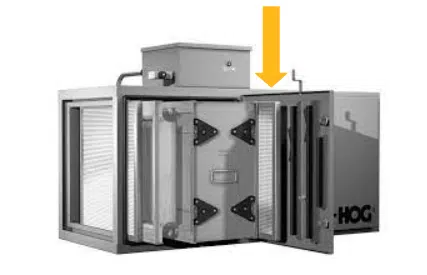How Frequently do I Need to Clean my Electrostatic Filters?

One question that we get asked all the time is how frequently electrostatic filters should be cleaned and maintained. After weighing the many factors that affect the duration between cleaning the cells on your SmogHogs, MistBusters, or other brands of Electrostatic air cleaner, The answer is. . .
It depends.
That is not a very good answer, so I will break down the factors that affect cleaning frequency:
- Hours of Operation – This one is pretty obvious; the more hours per day your air cleaner operates, the less time it will take to get the filters dirty. Another thing to consider is how much time the air cleaner actively filters out smoke versus just running (does your machine have a long cycle but only produces smoke for a small amount of time?).
- Pollutant Load – Pollutant load is the density of contaminants in the air that goes through the air cleaner. As a general rule, ducted systems have a much higher pollutant density than “free-air” or ambient systems; this means that ambient systems generally last longer between services than ducted systems. Even within ducted systems, there still is variability in how often your air cleaners need service. Some variables are the type of machine, coolant, and the part being manufactured. These factors contribute to the pollutant density of smoke in ducted systems.
- Pollutant Type – Typically, electrostatic air cleaners filter out oil smokes from high-speed machining, precision grinding, cold forming, and rubber/plastic manufacturing. They are also used in water-soluble coolant mist and welding fume applications. Different types of pollutants affect the electrostatic cells and ionizers differently. Applications capturing low-viscosity oils will last the longest, and water-soluble coolant or thick and sticky oils need cleaning sooner.
- Type of Air Cleaner – There are a lot of different brands and models of electrostatic air cleaners, and they are each designed slightly differently, meaning they do not all last the same amount of time between cleaning. If your air cleaners are double pass (meaning the airflow passes through two sets of ionizers and cells), you can go much longer between cleaning.
- Air Speed – The last main factor in determining how long your electrostatic filters will last is the airflow speed through your air cleaner. The recommended air velocity for an electrostatic is between 300 and 500 fpm. If the air goes faster, the air cleaner will stop capturing all the pollutants sooner, meaning it will need service more frequently. Slower particles start to lose their charge before the collector reduces efficiency.
With all these different factors, how are you supposed to determine a cleaning frequency accurately? There are a few ways that it can be done.
Check the back prefilter – If you check the back prefilter of your air cleaner every week, you will notice when it starts to get dirty. When this back prefilter gets dirty, it means that some of the pollutants are not being captured, and the filters need to be cleaned. Once you have determined how long it takes to get the prefilter dirty, try to service the air cleaner a week or so before that to ensure maximum efficiency.
Trial and Error – Another way to dial in the correct frequency for servicing your air cleaner is to start with your best guess (typically between 1-6 months), and adjust if necessary. If you notice blow-through before scheduled service, increase the frequency. If the filters are still relatively clean and working effectively, extend the duration between cleanings.
Examine the Collection Cell – The collection cell starts collecting particles at the front of the plates, and as the front gets dirty and loses efficiency, the particles get collected further back in the cell. If you take the cell out and look at the collection plates, you should be able to tell how deep into the cell the particles are. Once the cell is dirty 80% of the way back, you should have it cleaned and maintained.
Typically a well-designed system lasts between one to three months. More often than one month means your system is smaller than recommended. Longer frequency, and you may have a larger system than necessary. We recommend quarterly service as a starting point unless we expect heavy loading. For more information check out this video https://www.youtube.com/watch?v=0N-4Yi0ylH0
